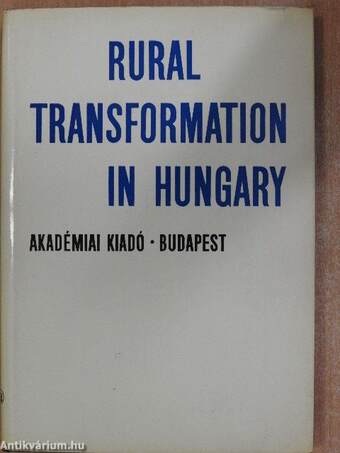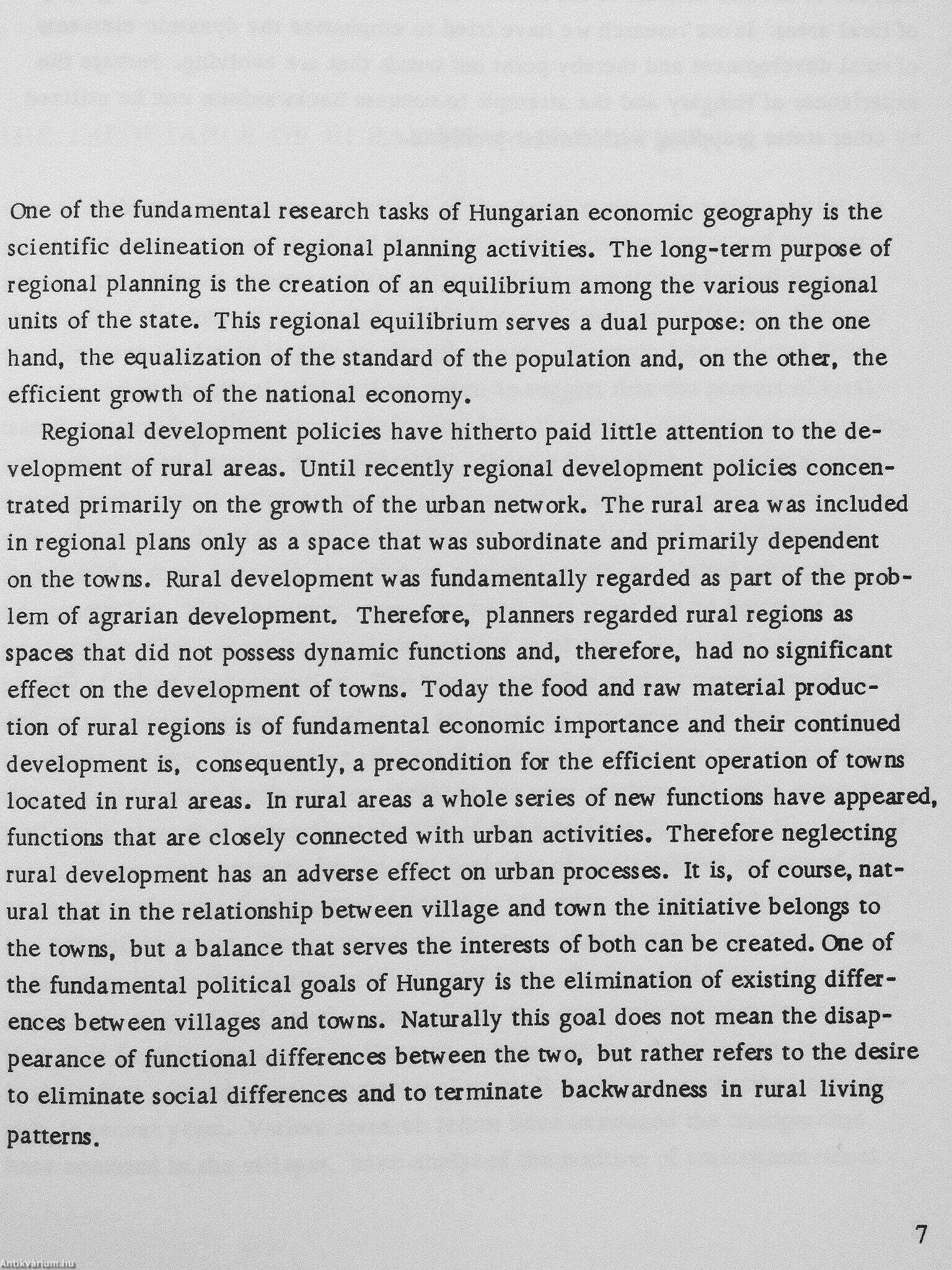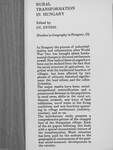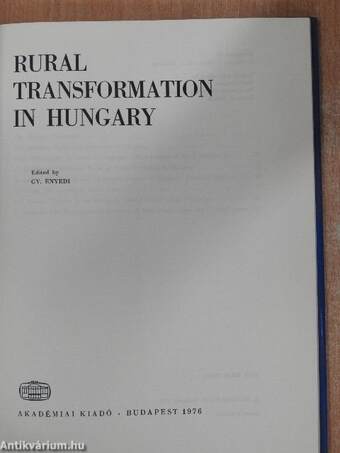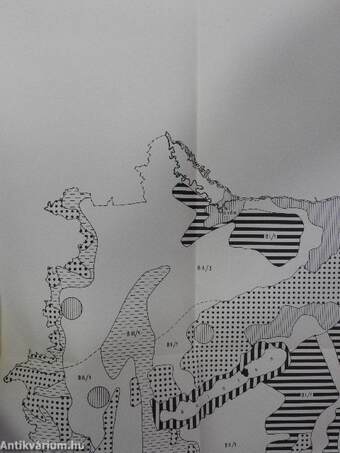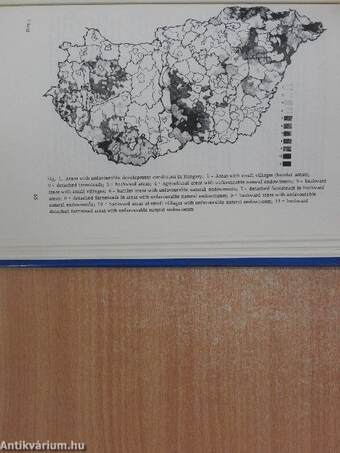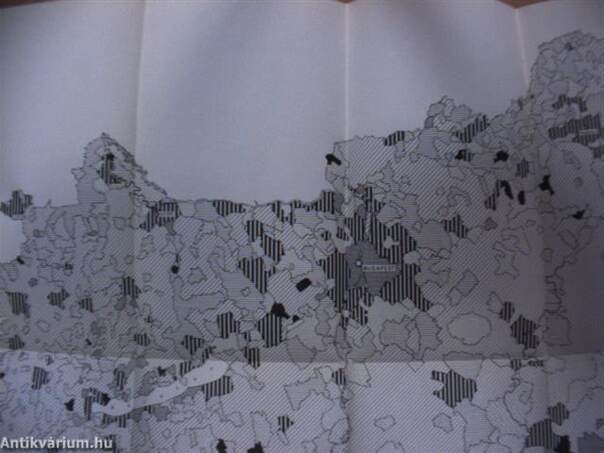1.066.806
kiadvánnyal nyújtjuk Magyarország legnagyobb antikvár könyv-kínálatát

VISSZA
A TETEJÉRE
JAVASLATOKÉszre-
vételek
Rural Transformation in Hungary
| Kiadó: | Akadémiai Kiadó |
|---|---|
| Kiadás helye: | Budapest |
| Kiadás éve: | |
| Kötés típusa: | Vászon |
| Oldalszám: | 116 oldal |
| Sorozatcím: | Studies in Geography in Hungary |
| Kötetszám: | 13 |
| Nyelv: | Angol |
| Méret: | 25 cm x 17 cm |
| ISBN: | 963-05-1025-1 |
| Megjegyzés: | További szerzők a tartalomjegyzékben. Fekete-fehér ábrákkal és három kihajtható melléklettel. |
naponta értesítjük a beérkező friss
kiadványokról
naponta értesítjük a beérkező friss
kiadványokról
Előszó
TovábbFülszöveg
RURAL TRANSFORMATION IN HUNGARY Edited by GY. ENYEDI (Studies in Geography in Hungary, 13) In Hungary the process of industrialization and urbanization after World War Two has brought about fundamental changes in the rural settlements as well. How radical these changes have been can be realized from the fact that the social structure of agriculture, together with the traditional function of villages, has been affected by two phases of ultimate historical significance: the land reform and the collectivization. The major results have been: socialoccupational restratification and a pronounced decrease in the population in rural areas, shifts in the rural settlement network, new ways of land utilization, növel traits in the living conditions and new functions appearing in village settlements (industry, tourism), and so on. The introductory study presents a eomprehensive picture of the changed face of the Hungárián village. Each of the six papers following this deals with a special... TovábbFülszöveg
RURAL TRANSFORMATION IN HUNGARY Edited by GY. ENYEDI (Studies in Geography in Hungary, 13) In Hungary the process of industrialization and urbanization after World War Two has brought about fundamental changes in the rural settlements as well. How radical these changes have been can be realized from the fact that the social structure of agriculture, together with the traditional function of villages, has been affected by two phases of ultimate historical significance: the land reform and the collectivization. The major results have been: socialoccupational restratification and a pronounced decrease in the population in rural areas, shifts in the rural settlement network, new ways of land utilization, növel traits in the living conditions and new functions appearing in village settlements (industry, tourism), and so on. The introductory study presents a eomprehensive picture of the changed face of the Hungárián village. Each of the six papers following this deals with a special characteristic feature of the transformation. Much attention has been paid by the authors to the geographical consequences of the postwar social-economic developments in the country. VisszaTémakörök
- Szociológia > Településszociológia > Falu, agrárszociológia
- Idegennyelv > Idegennyelvű könyvek > Angol > Természettudományok > Földrajz
- Idegennyelv > Idegennyelvű könyvek > Angol > Szociológia > Településszociológia > Falu, agrárszociológia
- Természettudomány > Földrajz > Idegen nyelv > Angol
- Szociológia > Magyarországon
- Idegennyelv > Idegennyelvű könyvek > Angol > Szociológia > Magyarországon
- Természettudomány > Földrajz > Magyarország gazdaságföldrajza
Megvásárolható példányok
Nincs megvásárolható példány
A könyv összes megrendelhető példánya elfogyott. Ha kívánja, előjegyezheti a könyvet, és amint a könyv egy újabb példánya elérhető lesz, értesítjük.



